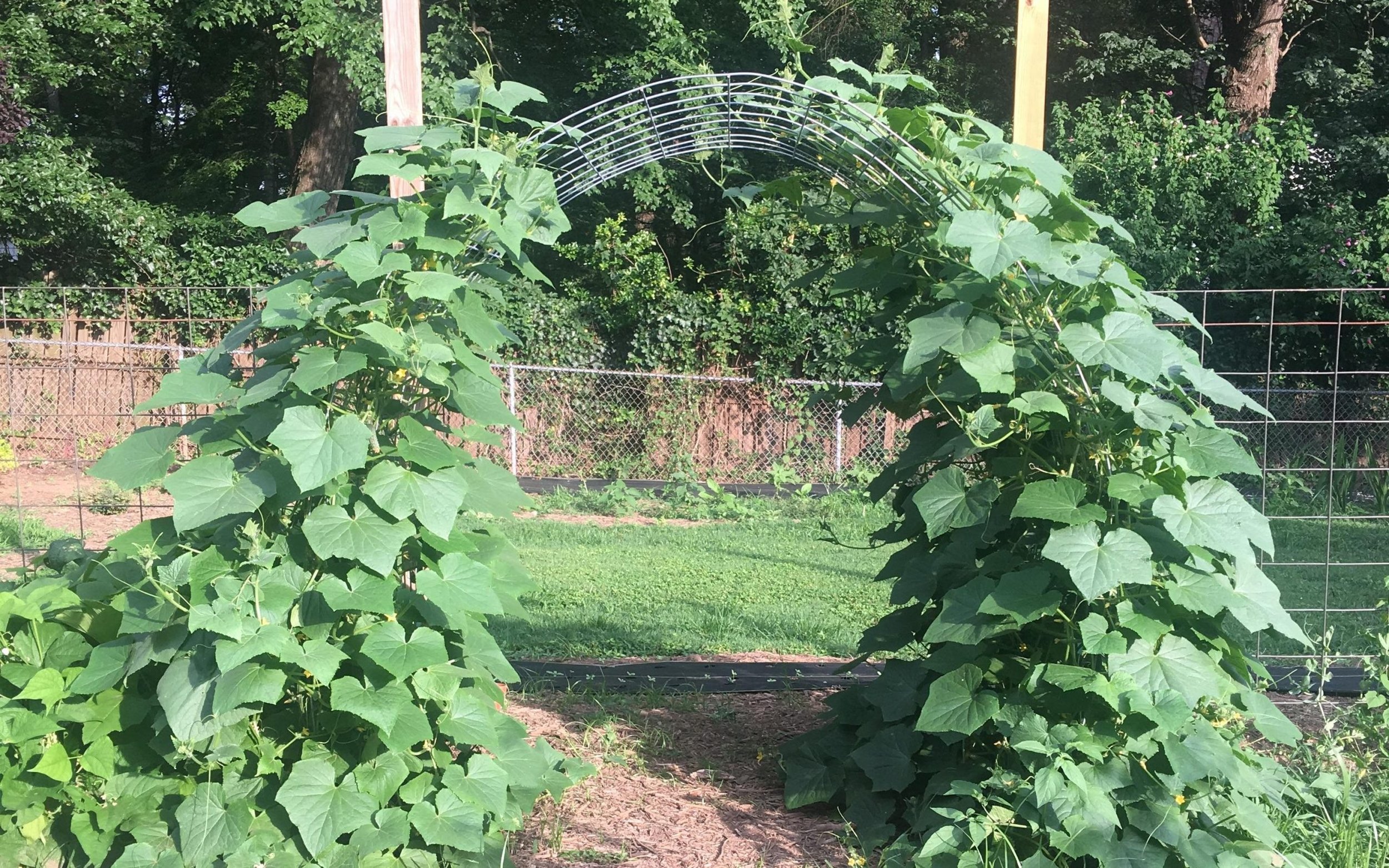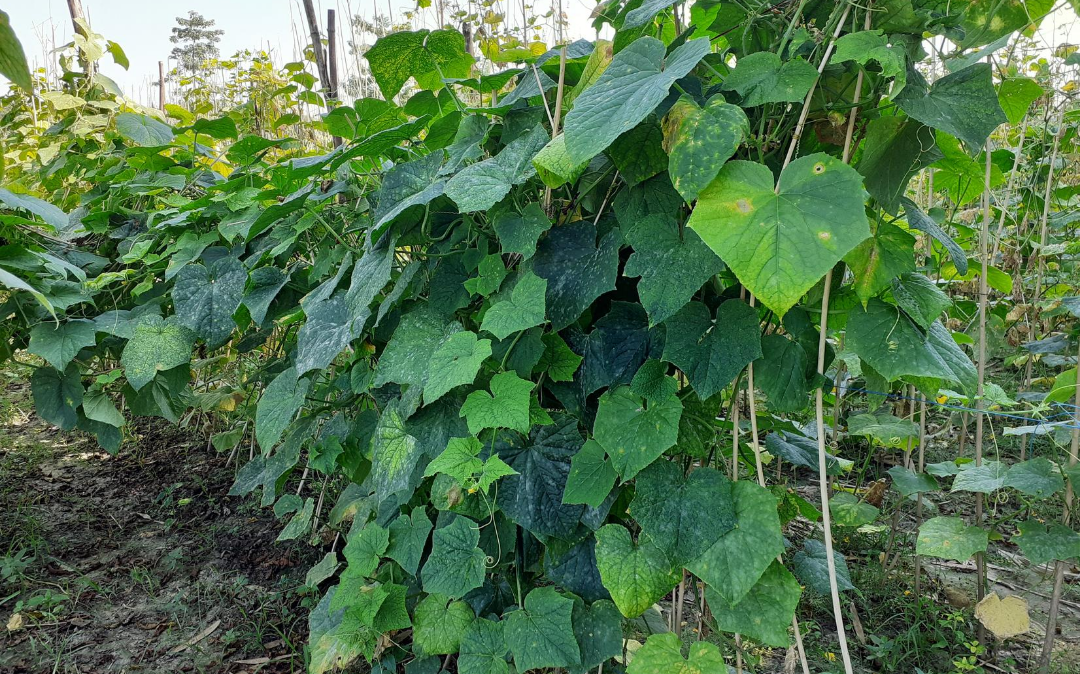Benefits of a Garden Trellis
AVOID THE “JUNGLE” GARDEN
Are your creeping sweet potato vines and sprawling cucumber plants taking over your garden and spilling out into the yard? When our clients start to compare their gardens to a jungle, we know it’s time to talk about trellises.
Some fruits and vegetables benefit from being encouraged to climb as they grow. And it keeps your garden neat and visually appealing as well.
HEALTHIER FOR PLANTS
When vines can cling to the sides of a cage instead of sitting on top of each other, it creates air circulation. This allows the leaves to stay drier, making them less prone to disease. A ripening fruit will rot much faster if it’s sitting on the ground. Another benefit: More sunlight!
Note: Even with a trellis, you may need to snap off some breakaway vines that grab onto other plants.
Sweet potatoes, for example, produce a better harvest if they are not allowed to take root at multiple places along the vine. If the vines run and re-root, they produce more slender tubers along the way and sometimes take up too many nutrients, producing more leaves instead of roots.
A sprawling sweet potato vine: Did you know you can eat the leaves? Just cook as if it were spinach!
MAXIMIZE SPACE
If allowed to grow at their own will, cucumbers could take over the entire garden. They tend to grasp and cling to whatever is nearby. Encouraging them instead to climb along a cage will contain them, and their neighboring plants will thank you.
The trellis you choose can also be an attractive focal point in your garden. Check out our online store to see the one we use for cucumbers, tomatoes, melons, sugar snap peas, pole beans, yard-long beans, and nasturtiums.
EASIER TO HARVEST, BETTER FOR POLLINATORS
A trellis makes harvesting easier. No need to bend over and the fruit is easier to find. Win-Win! The height makes it easier for pollinators, too. Bees can easily flit from flower to flower when plants are on a trellis.
The height also adds another barrier for four-legged critters. Sure, they may be able to climb, but the challenge may deter them.


